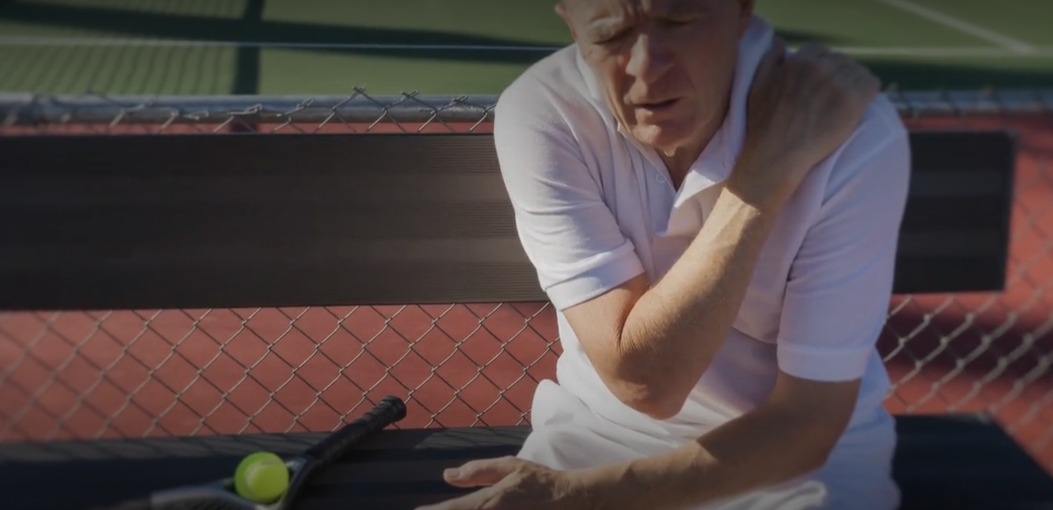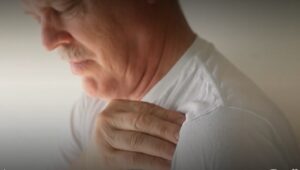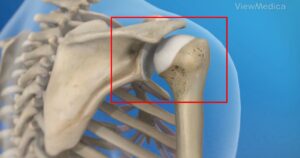Contact us today or request an appointment online!
Anatomy of the Shoulder
The shoulder consists of two joints, the acromioclavicular joint and the glenohumeral joint. The acromioclavicular joint is where the acromion, part of the scapula (scapula), and the collarbone (clavicle) meet. The glenohumeral joint is where the ball (humeral head) and socket (glenoid) meet. The rotator cuff connects the humerus to the scapula and consists of tendons of four muscles: supraspinatus, infraspinatus, teres minor, and subscapularis. Tendons connect muscle to bone. Muscles also pull on tendons to move bones. The rotator cuff muscles hold the humerus firmly in the socket. The socket, or glenoid, is shallow and flat. It is surrounded by soft tissue called the labrum, which creates a deeper socket that is molded to fit the humeral head. The joint capsule surrounds the shoulder joint. It is a fluid-filled sac that lubricates the joint. It consists of vineyards. Ligaments are soft tissues that hold bone to bone. Shoulder injuries can occur in any part of the shoulder.

There are several other important structures of the shoulder:-
- The rotator cuff is a collection of muscles and tendons that surrounds the shoulder, giving it support and allowing a wide range of motion.
- The bursa is a small sac of fluid that cushions and protects the tendons of the rotator cuff.
- A cartilage cuff called the labrum creates a receptacle for the ball-like head of the humerus to fit in.
The humerus fits relatively loosely into the shoulder joint. This gives the shoulder a wide range of motion, but also makes it vulnerable to injury.
 Shoulder Conditions-
Shoulder Conditions-
- Frozen shoulder: Inflammation develops in the shoulder that causes pain and stiffness. As a frozen shoulder progresses, movement in the shoulder can be severely limited.
- Osteoarthritis: Common “wear and tear” arthritis that occurs with aging. The shoulder is less affected by osteoarthritis than the knee.
- Rheumatoid arthritis: A form of arthritis in which the immune system attacks the joints, causing inflammation and pain. Rheumatoid arthritis can affect any joint, including the shoulder.
- Gout: A form of arthritis in which crystals form in the joints, causing inflammation and pain. The shoulder is a rare place for gout.
- Rotator cuff tear: A tear in one of the muscles or tendons surrounding the upper part of the humerus. A rotator cuff tear can result from a sudden injury or from continued overuse.
- Shoulder impingement: The acromion (side of the shoulder blade) presses on the rotator cuff as the arm is raised. If there is inflammation or injury to the rotator cuff, this compression causes pain.
- Shoulder dislocation: The humerus or one of the other bones in the shoulder slips out of place. Raising the arm causes pain and a “popping” sensation if the shoulder is dislocated.
- Shoulder tendonitis: Inflammation of one of the tendons in the shoulder rotator cuff.
- Shoulder bursitis: Inflammation of the bursa, which is the small sac of fluid that sits above the rotator cuff tendons. Pain with overhead activities or pressure on the upper, outer arm are symptoms.
- Labral tear: An accident or overuse can cause a tear in the labrum, which is the cartilage cuff located above the humeral head. Most labral tears heal without surgery.
 Shoulder Tests-
Shoulder Tests-
- Magnetic resonance imaging (MRI scan): An MRI scanner uses a high-powered magnet and a computer to create high-resolution images of the shoulder and surrounding structures.
- Computed tomography (CT scan): A CT scanner takes multiple X-rays, and a computer creates detailed images of the shoulder.
- Shoulder X-ray: A plain X-ray film of the shoulder may show dislocation, osteoarthritis or a fracture of the humerus. X-ray films cannot diagnose muscle or tendon injuries.
- Electrical studies. Your doctor may order a test, such as an EMG (electromyogram), to evaluate nerve function.
- During this x-ray study, dye is injected into the shoulder to better show the joint and its surrounding muscles and tendons. It may be combined with an MRI.
- In this surgical procedure, your doctor looks inside the joint with a fiber-optic camera. Arthroscopy may show soft tissue injuries that are not apparent from the physical examination, x-rays, and other tests. In addition to helping find the cause of pain, arthroscopy may be used to correct the problem.
Shoulder Treatments-
- Shoulder surgery: Surgery is usually done to help make the shoulder joint more stable. Shoulder surgery can be arthroscopic (several small incisions) or open (large incision).
- Arthroscopic surgery: A surgeon makes small cuts in the shoulder and operates through an endoscope (a flexible tube with a camera and instruments at the end). Arthroscopic surgery requires less recovery time than open surgery.
- Physical therapy: An exercise program can strengthen shoulder muscles and increase flexibility in the shoulder. Physical therapy is an effective, non-surgical treatment for many shoulder conditions.
- Pain relievers: Over-the-counter pain relievers such as acetaminophen (Tylenol), ibuprofen (Motrin), and naproxen (Aleve) can relieve most shoulder pain. More severe shoulder pain may require prescription medications.
- RICE therapy: RICE stands for Rest, Ice, Compression (usually not necessary), and Elevation. RICE can improve the pain and swelling of many shoulder injuries.
- Corticosteroid (cortisone) injection: A doctor injects cortisone into the shoulder to reduce inflammation and pain caused by bursitis or arthritis. The effects of a cortisone injection can last for several weeks.
If you are suffering from any kind of shoulder pain please contact Spine and Joint Pain Consultants in Interventional Pain Specialist in Houston.
Address :
Midtown Location
4101, Greenbriar Dr, Suite 208
Houston, Texas 77098
Missouri City Location
3634 Glen Lakes Lane, Suite # 101,
Missouri City , Texas 77459
West Location
10190 Katy Fwy Suite 240
Houston – 77043
Phone: 832-777-7246
Fax: 832-706-0777
Timing :
Mon-Fri: 8:30AM to 5:00 PM
Saturday-Sunday Closed
